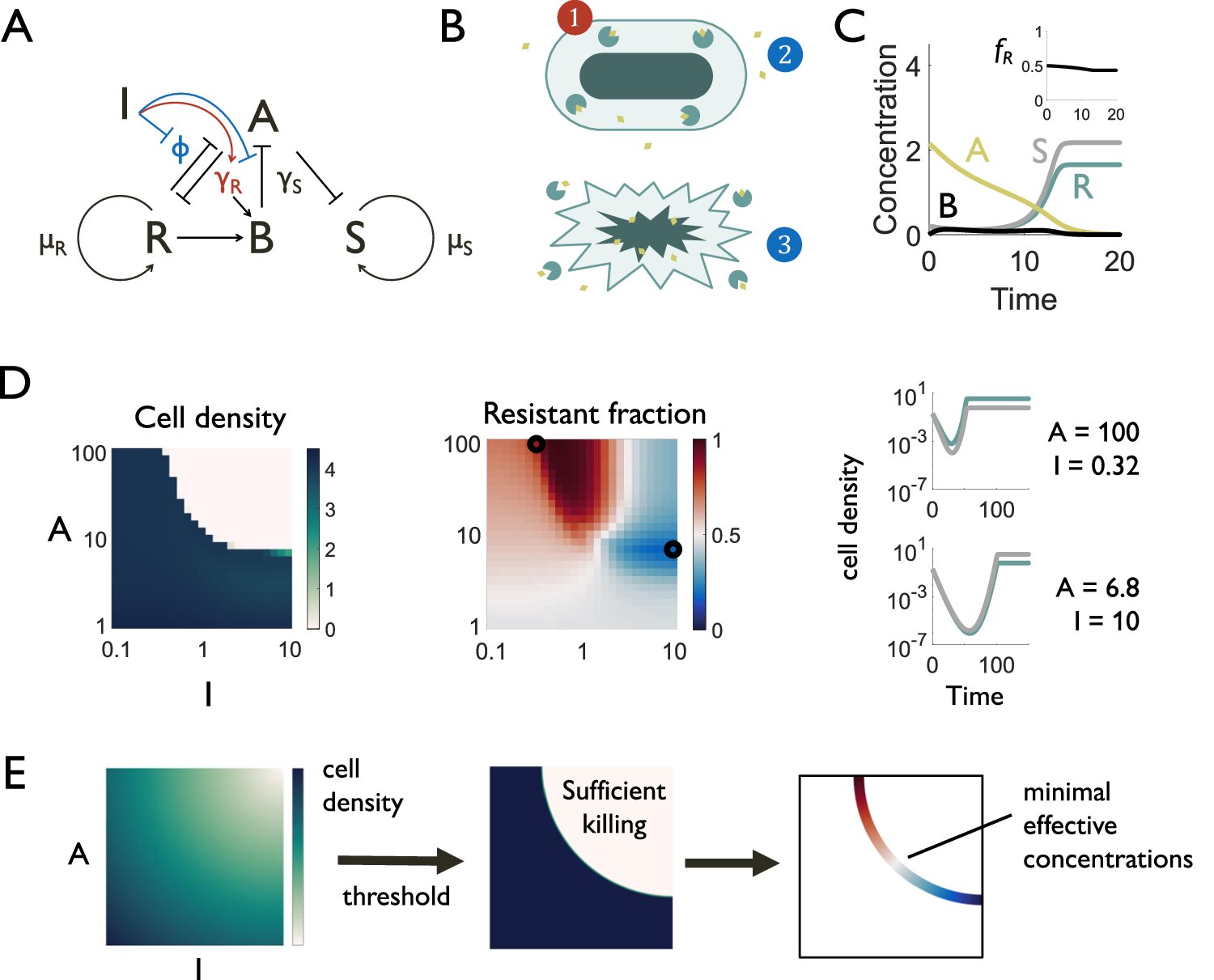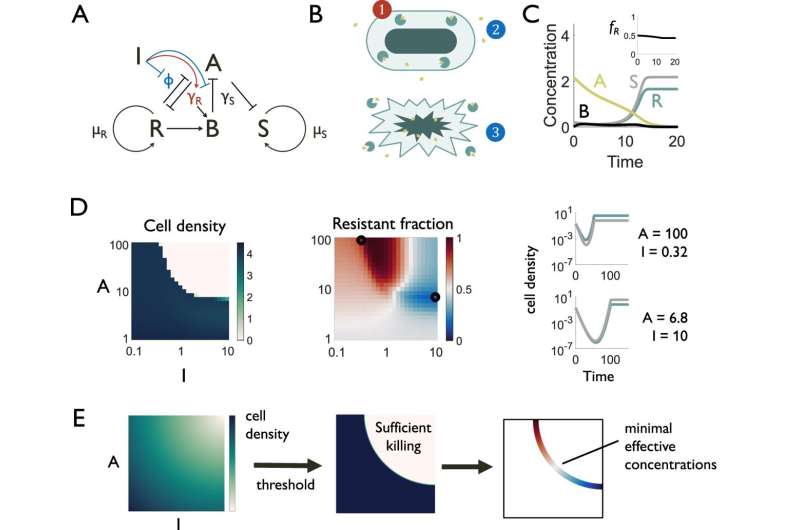

As strains of pathogens resistant to frontline antibiotics become more common worldwide, clinicians are more often turning to combination treatments that degrade this resistance as a first treatment option.
One might expect, then, that antibiotic-resistant pathogens might evolve to adapt to this approach. Previous studies, however, have resulted in contradictory conclusions about how likely that is.
In a study published in Nature Communications, researchers from Duke University have discovered the mechanism behind these discrepancies—the bacteria’s level of “selfishness.” The insight provides guidance to clinicians on how to best tailor these combination treatments to different pathogens, minimize the selection for resistance and formulate new antibiotic resistance inhibitors.
“Recent studies have shown a two-fold increase in the prevalence of antibiotic-resistant pathogens in the American South over a span of just five years,” said Lingchong You, the James L. Meriam Distinguished Professor of Biomedical Engineering at Duke. “But that’s just the tip of the iceberg. This is a global problem. As doctors turn to combination treatments more often, we need to understand how best to implement them to minimize selection for resistance.”
The most-used class of antibiotics in the world, which includes common drugs like penicillin, are beta-lactam antibiotics. This is also the class of antibiotics that bacteria are most likely to have evolved a resistance to.
Rather than mutating to avoid antibiotics, bacteria become resistant to beta-lactam by creating an enzyme that degrades the drug. To fight this resistance, researchers are creating pharmaceuticals that attack and inhibit the enzyme. Used in combination, these inhibitors can restore the efficacy of beta-lactam antibiotics.
However, previous studies have found discrepancies in how resistant infections react to these treatments. In some experiments, the surviving antibiotic-resistant cells have become enriched, leading to a greater possibility of their adapting to combination treatments. But in other experiments, the energy cost of creating the antibiotic-degrading enzyme has left the resistant cell population depleted, allowing other cells to benefit from their hard work and thrive instead.
“These apparently contradictory observations are what motivated our study,” said You. “And the take-home message is very simple: Based on their genetic traits, if the bacteria are really selfish with their resistance enzymes, then they will thrive after treatment. But if they’re programmed to share their resistance as a public good, then cells that are otherwise sensitive to the antibiotics will benefit more.”
The enzymes that degrade the beta-lactam antibiotics are produced and anchored within a bacterium’s outer membrane. This makes them primarily beneficial to the bacteria that produce the enzyme. But as these resistant bacteria degrade the drugs around them, they also help protect the entire population. The enzymes can also be released into the environment when resistant bacteria die or because the anchors holding them to the cell are too weak.
These are all naturally occurring variables that can either make resistance more of a private good or more of a public good, You said. More selfish bacteria do a better job of hanging on to these enzymes, while less selfish strains do not.
To demonstrate how this difference might affect combination therapies, You and his laboratory created artificial strains that were either very selfish or very generous with their resistance enzymes. Using robotic, high-throughput culturing technology, the lab showed that selfish strains thrived after the combination therapy while generous strains did much worse.
You says these results have two important clinical implications. When using beta-lactam resistance inhibitors, doctors should take the specific strain being treated into account. The ability to penetrate the bacteria’s membranes does a better job of killing selfish bacteria, effectively suppressing their selfish traits and minimizing the chance of them evolving more resistance. Researchers should look to create inhibitors and other adjuvants that can help these inhibitors get taken into the bacteria.
“Beta-lactam antibiotics and beta-lactam resistance inhibitors are made in standard formulations and can’t be changed, but there are options to choose different formulations together, and this work could help optimize those choices,” You said. “If we create a database that quantifies how different strains react to these combinations, that could profoundly improve the quality of treatment.”
More information:
Helena R. Ma et al, Private benefit of β-lactamase dictates selection dynamics of combination antibiotic treatment, Nature Communications (2024). DOI: 10.1038/s41467-024-52711-w
Provided by
Duke University
Citation:
Targeting ‘selfish’ bacteria could optimize inhibitors that fight antibiotic resistance (2024, October 10)
retrieved 10 October 2024
from https://phys.org/news/2024-10-selfish-bacteria-optimize-inhibitors-antibiotic.html
This document is subject to copyright. Apart from any fair dealing for the purpose of private study or research, no
part may be reproduced without the written permission. The content is provided for information purposes only.